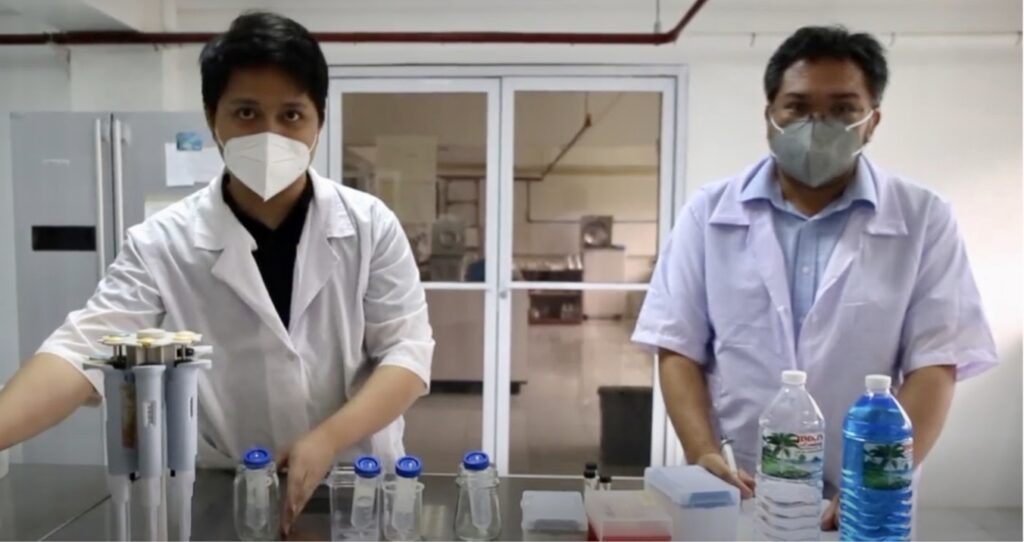Text by Henrylito D. Tacio
Photos: Wikipedia, Getty, and DOST
Social drinking – tagayan or inuman in Tagalog and Visayan languages – is almost always a part of Filipino culture during celebrations. Whether it is a birthday party, a fiesta, a wedding, or just a simple get-together, Filipinos have a reason to gather together around a table, buy some alcoholic drinks and just chat the night away.
While in the cities, cases, and cases of beer are being served during the celebration, it is a different story in the rural areas. Usually, tuba and lambanog are common drinks as these are readily available.
Tuba, made from coconut sap, is being served in most rural areas in the country. But lambanog is a specialty of those from Quezon and Laguna provinces. Some people call lambanog the “poor man’s drink” because of its inexpensive production process.
Because of its popularity, there are now some companies marketing it with different flavors like apple, blueberry, bubblegum, cherry, cinnamon, mint, mango, and pineapple in an effort to appeal to all age groups.
As the liquor ban is already lifted and the Christmas season is fast approaching, Filipinos will again be drinking to their heart’s content. But they need to be reminded that drinking may be hazardous to their health, especially if they drink lambanog.
It must be recalled that during the Christmas celebrations in 2019, at least 23 people died, and hundreds more were being treated for methanol poisoning after drinking locally-made lambanog in Laguna and Quezon provinces.
The Food and Drug Administration (FDA) found high levels of methanol mixed into lambanog, commonly bootlegged by unregulated makers for cheaper costs.
The levels found in the lambanog samples were found to exceed the safety levels of 0.5%. “Ingestion of 30 mL is considered to be potentially fatal,” said a statement released by the FDA to the media.
“Lambanog poisoning is caused by residual methanol, which in high levels becomes highly toxic for humans,” Health Secretary Francisco T. Duque was quoted as saying. “Methanol is a naturally occurring substance present during the distilling process that should be separated and removed thereafter.”

Lambanog is derived from tuba that has been aged for at least 48 hours. Commonly described as “coconut vodka” due to its clear to milky white color and high alcohol content, its smoothness has been compared to that of Japanese sake and European schnapps.
The traditional Filipino distilled palm liquor is particularly potent, having a typical alcohol content of 80 to 90 proof (40% to 45% abv or alcohol by volume) after a single distillation; this may go as high as 166 proof (83% abv) after the second distillation.
The tragedy that happened in 2019 was not the first time. In 2018, a group of people in Calamba, Laguna drank lambanog in November and had symptoms; they were brought to the hospital, where they subsequently died thereafter. A few days later, four tricycle drivers died after they consumed lambanog; thirteen others were hospitalized in Quezon City.
In order to avoid such tragedies to happen again, the regional office of the Department of Science and Technology of CALABARZON (Cavite, Laguna, Batangas, Rizal, and Quezon), in partnership with Cavite State University (CvSU), is currently developing a field-test kits for business owners that can be used for internal quality control to ensure food quality and safety.
“By taking samples and treating them, the observable change in its hue can help local brewers determine whether or not their products are safe for human consumption,” the science department said in a press statement.
Prototypes are very simple to use and affordable, but developers stressed that it needs more tests to prove their technical and economic feasibility. The initiative is led by its project leader, CvSU’s Dr. Hosea Matel of CvSu and DOST–Science Education Institute Science Research Specialist, Jon Uriel Layos.
To develop a low-cost field test kit (that is, microfluidic paper-based colorimetric sensor) for detection of methanol contamination in alcoholic beverages, such as lambanog, and to help the producers establish food quality and safety standards, are the goal benefits of the technology.
“The field-test kit for methanol is helpful in testing for food safety of lambanog; when deployed it can be integrated in the quality control procedures of distillers. This might be helpful in bringing back public trust on an age-old traditional product,” explained Dr. Matel.
This is good news for the Southern Tagalog region, the traditional center of lambanog production. Among the current main producing areas are Quezon, Laguna, and Batangas, where coconuts are a dominant agricultural crop.
“Most lambanog producers are small-scale cottage industries with only around 4 to 25 employees,” Wikipedia states. “Unregistered lambanog production is illegal in the country under regulations by the Food and Drug Administration and the Department of Agriculture.”
Consumers are warned only to buy lambanog that is properly sealed and made by companies registered with the FDA.
Methanol, or toxic alcohol, is also found in various household and industrial agents. Products that contain methanol include windshield washer fluid, gas line antifreeze, carburetor cleaner, copy machine fluid, perfumes, food warming fuel, and other types of fuel.
“Methanol exposure can be extremely dangerous, with significant morbidity and mortality if left untreated,” wrote John V. Ashurst and Thomas M. Nappe in a paper published by the US National Institute of Health. “Methanol poisoning is most often due to accidental or intentional ingestions, and accidental epidemic poisonings due to distilling and fermenting errors and beverage contamination.”

When ingested, methanol is absorbed rapidly via the gastrointestinal tract in less than 10 minutes. “Methanol is not protein-bound and is absorbed directly into the total body water compartment,” Ashurst and Nappe wrote.
In the early stages, methanol poisoning might be difficult to distinguish from inebriation from normal ethanol consumption, said methanol.org. “Severe symptoms do not usually occur until 12-24 hours after consumption,” it added.
Among the symptoms a person will experience if he ingests methanol include headache, dizziness, nausea, and lack of coordination. Depending on the amount of alcohol taken by the body or the tolerance of the person, it could lead to permanent blindness, seizures, coma, permanent damage to the nervous system, or even death.
How can a person who has ingested methanol be saved? “Initial treatment is primarily supportive of respiratory and cardiovascular function,” says the US Centers for Disease Control and Prevention (CDC). “The goal of treatment is to either prevent the conversion of methanol to toxic metabolites or to rapidly remove the toxic metabolites and correct metabolic and fluid abnormalities.”
This is the reason why a person who has ingested methanol should be brought to the hospital immediately. In the hospital, doctors inject fluids through vein (intravenous or IV) medicines to treat symptoms, including antidotes to reverse the effect of the poison. In some instances, doctors may put a tube through the nose to remove the remaining poison if the person is seen within 60 minutes after ingesting it.
“Fomepizole and ethanol are effective antidotes against methanol toxicity,” CDC says. “Fomepizole or ethanol should be administered as soon as possible once the patient has been admitted to a medical care facility.”
There are several effects of methanol when a person keeps on being exposed to the chemical. “Methanol is not suspected to be a carcinogen,” CDC says. “Chronic or repeated exposure to methanol is suspected to be a development toxicity risk. It is unknown whether chronic or repeated exposure to methanol is a reproductive toxicity risk. Methanol may cause birth defects of the central nervous system in humans.
“Chronic poisoning from repeated exposure to methanol vapor may produce inflammation of the eye (conjunctivitis), recurrent headaches, giddiness, insomnia, stomach disturbances, and visual failure,” CDC adds.

